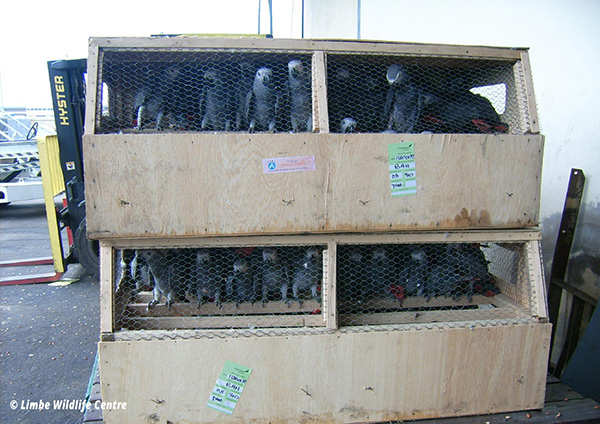Developing Forensic Tools to Fight Wildlife Trafficking
Status:

Collaborators/Funders:
Ecosolve Project (funded by the European Union’s Global Illicit Flows Programme) of Global initiative Against Transnational Organised Crime (GITOC)
The World Parrot Trust is working to develop and implement a new forensic tool that could be a game-changer in ending the trafficking of Grey Parrots (Psittacus erithacus) and other species.
Distinguishing between captive-bred and wild-sourced parrots poses a significant challenge for law enforcement agencies, as the vast scale of the trade in captive-bred parrots is exploited by wildlife traffickers to launder wild parrots. To address this, the World Parrot Trust has partnered with researchers at the University of Colorado Boulder to develop an innovative, non-invasive technique that can distinguish captive-bred from wild-sourced parrots based on a single faecal sample. The method involves using next-generation sequencing to profile the gut microbiomes of parrots in trade, which research conducted to date shows are highly distinctive.
In 2025 and 2026, with funding from the EcoSolve project of the Global Initiative Against Transnational Organised Crime (GITOC), WPT has launched the next phase of this project, which will determine how to use this tool in real-world settings at vulnerable points along legal supply chains. The project works with government and civil society organisations in South Africa, the largest exporting country of captive-bred Grey Parrots, and in Iraq and UAE, major importers of parrots, where the import of Grey and other parrots is currently showing a growing trend.
Populations of Grey Parrots have undergone major declines as a result of large-scale trapping for the pet trade. They are classified as Endangered on the IUCN Red List and were moved to CITES Appendix I in 2017. Although international trade in wild-sourced Grey Parrots is not permitted, registered breeding centres can export tens of thousands of captive-bred parrots annually. Effective and easy-to-implement forensic tools are urgently needed to prevent laundering and end the trapping of wild parrots and the further depletion of wild populations. Although the current project is focused on Grey Parrots the tool holds enormous potential for addressing trade in other parrots, birds, mammals, reptiles and amphibians on all continents of the world facing similar threats and trends.